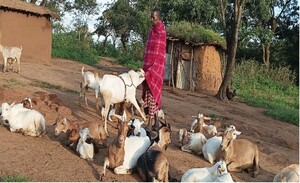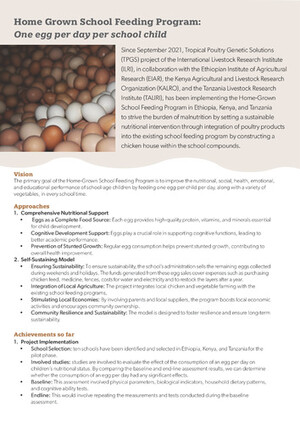
The use of vaginal electrical resistance to diagnose estrus and early pregnancy and its relation with size of the dominant follicle in dairy cattle
Abstract
The use of vaginal electrical resistance (VER) for estrous detection and early pregnancy diagnosis were evaluated using three experiments in dairy cattle, in Ethiopia. VER was measured: 1) during the natural estrous (n = 60) cycle, 2) during estrus induced by GnRH+ PGF 2· (n = 11) and 3) during post insemination in dairy cows synchronized with GnRH+CIDR+PGF 2· (n = 25). Results from Experiment 1 indicated that VER (mean ± SD) during pro-estrus, estrus, metestrus, diestrus and anestrous was 89.6 ± 3.1, 82.2 ± 2.2 102.9 ± 3.1, 106.8 ± 1.4 and 119.7 ± 1.7 ohm, respectively. Results from Experiment 2 indicated that VER was highest (102.4 ± 2.0 ohm; P < 0.001) at the time of PGF 2· injection and significantly declined to 82.3 ± 0.7 ohm at the time of estrus and increased (94.9 ± 2.0 ohm; P < 0.001) 24 h after estrus. The mean diameter of the largest follicle (DLF) was highest (14.3 ± 0.1 mm; P < 0.001) at estrus and lowest (10.0 ± 0.1) at the time of PGF 2· injection. The VER value was inversely correlated (r = -0.50; P < 0.001) with DLF. Results from Experiment 3 showed that VER significantly (P < 0.01) declined from day 19 to day 21 post insemination in non pregnant cows compared with pregnant cows. The study proved that VER can effectively be used for estrus detection and can be used to diagnose early pregnancy (day 18-21 post insemination) in dairy cows.
Citation
Tadesse, M., Thiengtham, J., Pinyopummin, A., Prasanpanich, S. and Tegegne, A. 2011. The use of vaginal electrical resistance to diagnose estrus and early pregnancy and its relation with size of the dominant follicle in dairy cattle. Kasetsart Journal - Natural Science 45(3): 435-443.










